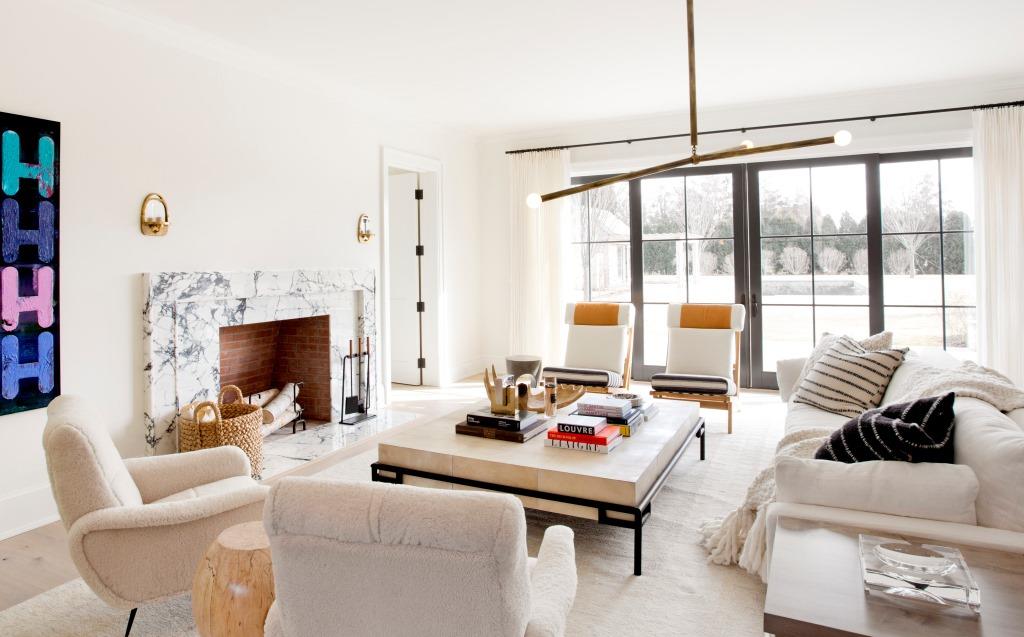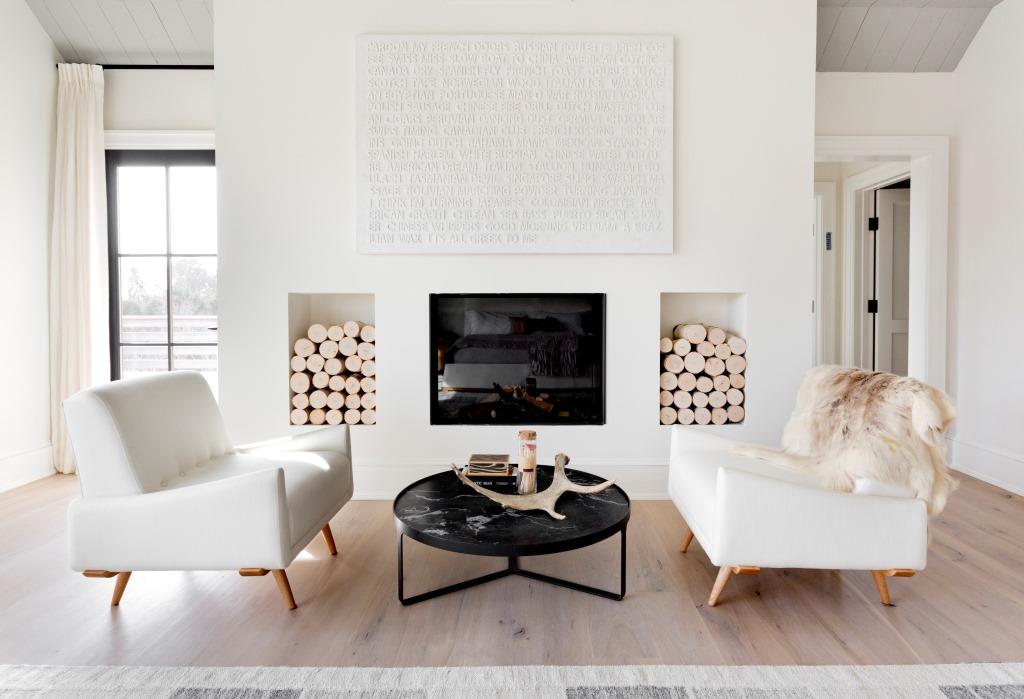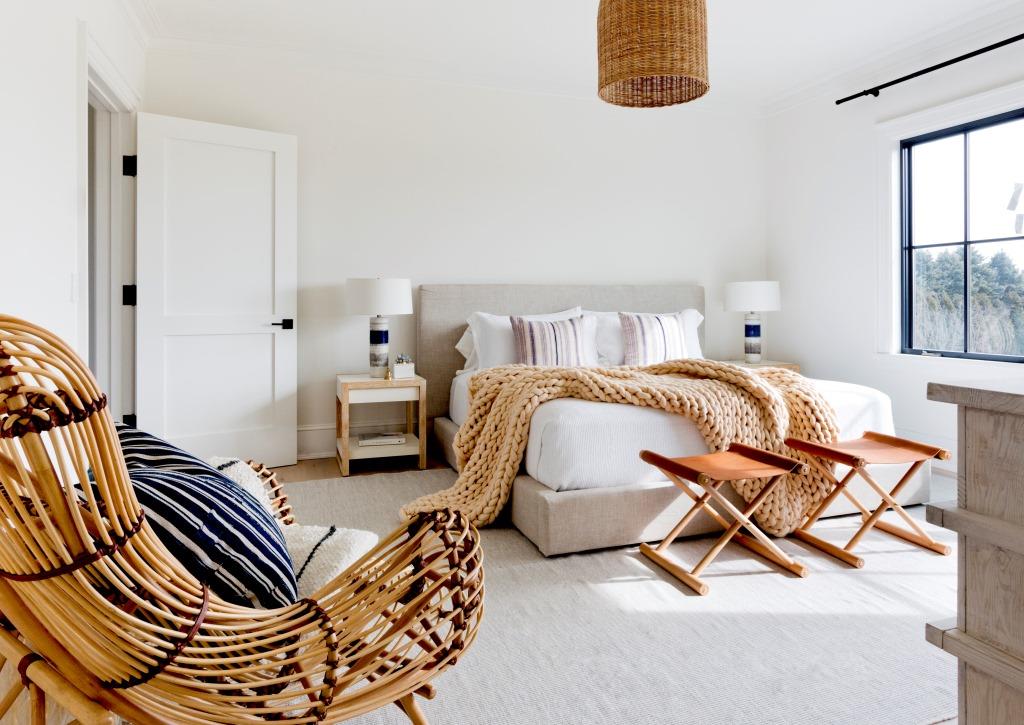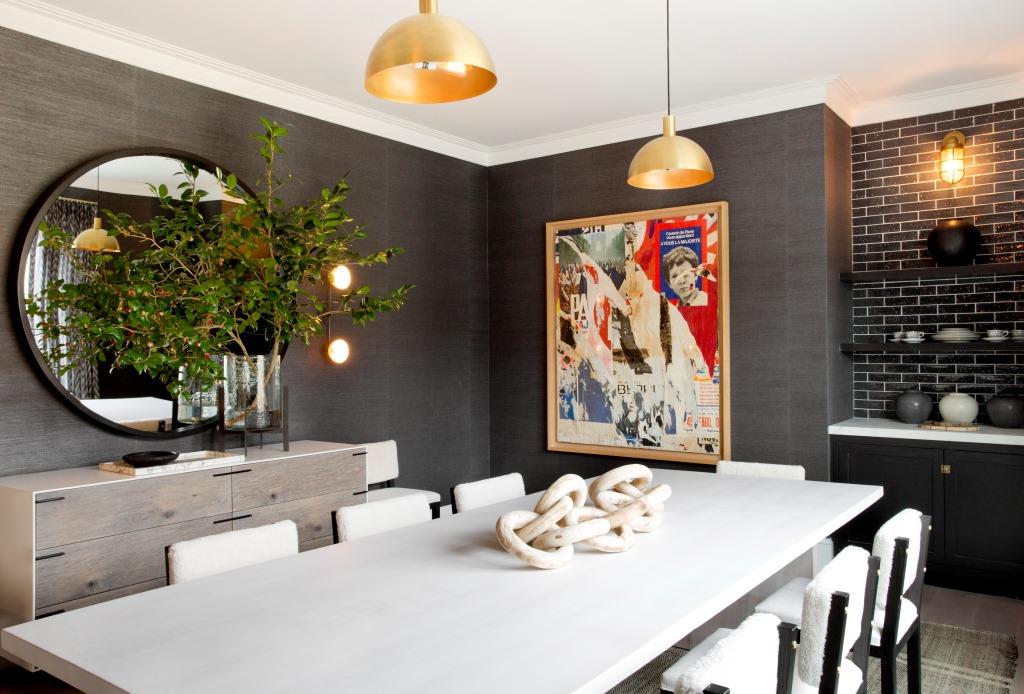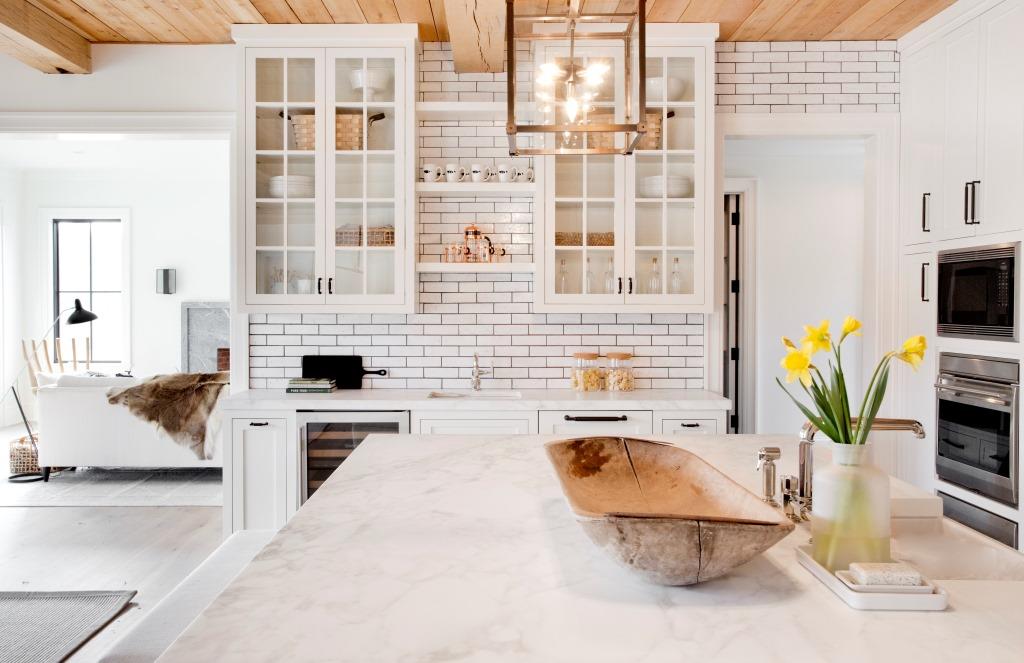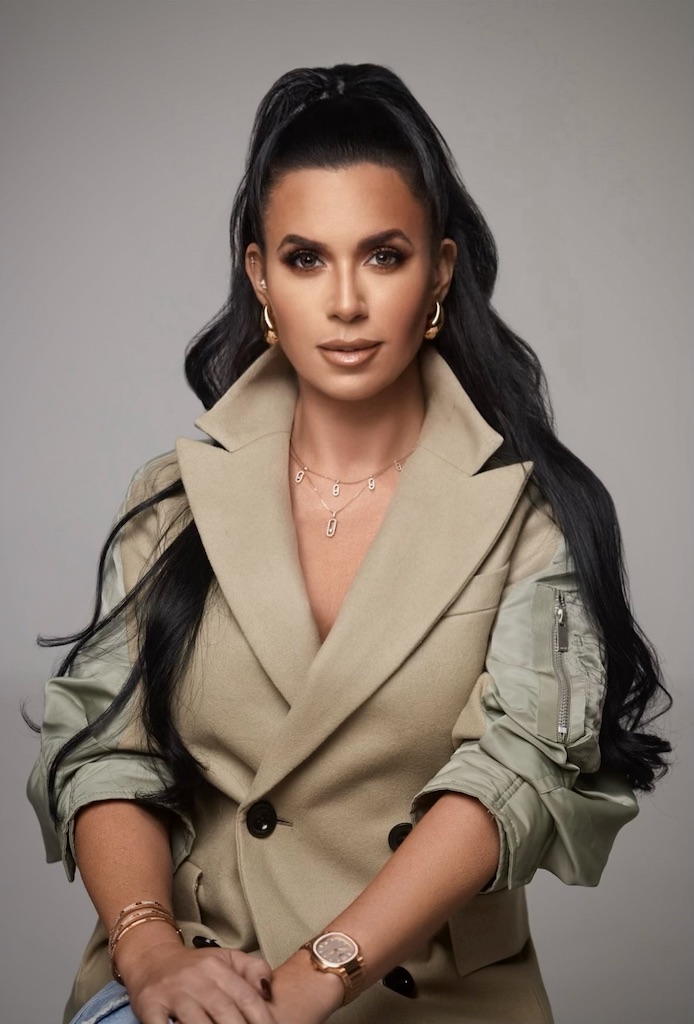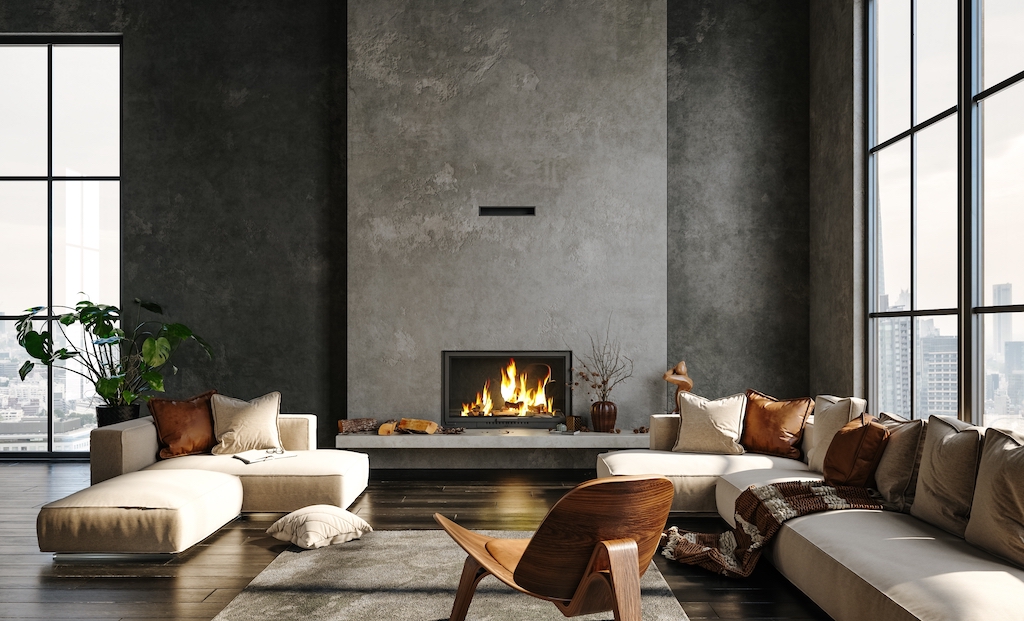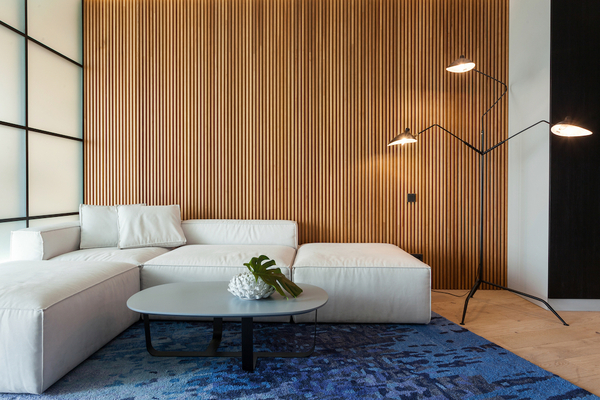Tamara Magel is an interior designer with a discerning and fealty clientele. She regularly styles multi-million homes, which draw sleek editorials in the nation's largest real estate and home decor publications. Yet, Magel came to the field after years of cobbling a career that lacked the creative exploration she hankered for.
With a talent for math, Magel worked in accounting and software consulting. In her late 20s, however, she resigned from Pricewaterhouse to pursue what truly made her happy. From working with developers and architects, to owning a home and beachwear store, Magel found her forte in interior design.
Having just finished a $24 million residence in Sagaponack, wrapping up homes in the Hamptons and embarking on new projects in New York, Magel talked to Haute Residence about her craft, its challenges and rewards.
You recently finished a project at Sagaponack, New York. What house is it?
It is a big house – 11 bedrooms. It took about a year and a half. We built it from the ground up, with breaking ground, designing everything and including the furniture, it took an year and half, which was pretty fast.
I really wanted to do a European modern farmhouse. I prefer sort of European interiors with the rustic wood – so that was my inspiration. But I wanted it to be more beach-y, clean, open.
What challenges did you face?
The main things were that it is a $24M house and it is at the beach. Making a house feel substantial and high-end without being over the top – because it is at the beach and it is farmland out there – I really needed to figure out how to do that. I wasn't sure. [I had to] really think about getting a luxurious product without being ostentatious.
The other thing was, I mean, when you are building a house from scratch ... You know, all of the tiles needed to be there, before anything else. So, that means I had to have some ideas for all 12 bathrooms very early on and I have to say that was very challenging. I didn't even know what I was going to do in half of the bathrooms. I tried to use classic tiles. I used a lot of Belgian bluestone, calacatta gold, carrara. I used a lot of white marbles and big black stone. So, at least, when I started building off of those, I would have a classic base to start with.
I just love natural stuff. In the house I made sure that I do not use any synthetics. I use all natural materials. Even in my fabrics, my threads, I do not use any synthetics.
What is it like, as an interior designer, to have been involved in creating the house from the very beginning?
I think the reason the house is very successful is that the finishes, the architectural details go with the furniture. It was a whole look being done together versus someone designs the house and then you have to come in and have to make a decision what furniture go with the look of the house. I think it is super important to have an [interior] designer on from the very beginning and I don't think people realize that. They hire an architect, they finish the house and then they bring a designer in. But for us to work on the kitchens, the bathrooms, the fireplaces, pick the floor, you really are going to get a whole overall design. I think that the main thing is being cohesive.
Do you have a favorite part of the house?
I actually love the junior master wing that [has] the bathroom with the black cabinet and a big oval tub. I like that bedroom down there – it is very relaxed. I also love the living room – the fireplace is my favorite thing in the house. It is a form of calacatta gold and it is special. I just love how you walk in through the front door and look straight out at the back of the house.
When working on homes, what is your relationship with clients?
Obviously, it is their home and everybody has sort of things that they like or don't like just because maybe they grew up with it. I do a lot of upfront research. I make sure that they send me a lot of images of things that they don't like, that they like. But then, I really try to narrow it down. I tried to collect most of that information upfront, so that I am presenting things that they are going to be comfortable living with. It is a collaboration but I am trying to educate and narrow things down, so that they have some good choices that they are going to be comfortable with.
As a designer, a lot of it is about educating people. These are the things that we can do that stay in the realm of your comfort zone – whether it is budget, style, color.
How would you describe your work process?
I think that every designer works in a different way. I mean, I have my particular system, which is collecting a lot of information from the client, images that I love myself to be inspired. Then you are taking into account a budget – there are so many details that you need to create art, basically. It is being an artist. So, it is hard to describe my process of how I get to the end but it is collecting a lot of data and then, sort of, deciding how all of that fits together.
I really, really use a lot of texture. I make sure that there is a soft fabric and then there is a hard surface – maybe a wood or a metal. Because I do not use a lot of pattern, I have to really be creative with textures.
Why don't you use patterns?
I am just not attracted to them. I like one or two in a corner but when I come to a room, I like it to be easy on my eye. I do not want to see a lot. I want to sort of just get enveloped into the room and I find that patterns can be jarring to the eye. I like it in, maybe, a dining room or a room that you don't spend a lot of time in.
But you know, I go through phases. Sometimes I am more into patterns than others but for the most part I am not a big pattern or color person. Unless it is an accent, I do not mind an accent of color in my art – meaning, one or two pillows, maybe a rug, but these are all things you can move if you get sick of looking at them.
Are there any styles you particularly like?
I am eclectic, so I probably take little things from everywhere. I am taking little bits and pieces from anything that I like.
Do you have a favorite project ever?
Not really a favorite. I love them all. I get very, very involved when I am doing a project. This [last] one was amazing because I didn't really have a client. I got to do what I wanted to do and I think you can really see that. But I like all my projects. At the time I am doing them, they are always my favorite. And then I move on to the next one.
How do you combine luxury with the intimate and everyday that form somebody’s home?
I think you can do very beautiful architecture and lighting and get the glamour and get the wow. But then, I want to make a home feel comfortable. I want to be there and watch TV, right? I want my bedroom to be comfortable. So, you pick and choose the rooms where you want to have that wow factor and also lighting. I think that lighting can be so beautiful.
So, it is just balancing those two things – and I want comfort when I am at home. But I think you should find a way to be comfortable and still make a statement and still have pieces that are wow factors in the room.
You adhere to environmental and social responsibility – how does this translate in your projects?
Right now, I am just about to build a house that is very cutting-edge in regards to the environment and even personal health. I am building a home that is mold-free. It keeps the moisture out of the house, has a great air flow in and out of the house. We are working on using healthy materials. I think that our homes have got very, very toxic. So, right now we are doing a lot of research into building this next home that is going to be low chemicals.
I was very involved with a non-profit that was helping women artists create things. So, when we can we are buying back goods from women artists and overseas. The fabrics we use – we try to use as many as we can find that don’t have a lot of dyes, not a lot of chemicals. The same with rugs. It is a hard thing to do at this point because there are so many chemicals out there in our goods, but that is where, I think, using these more natural materials [is important]. We are working on a furniture line that is low in VOCs [volatile organic compounds that are emitted as gasses and have adverse health effects].
What brands do you prefer to work with?
I use a lot of Holly Hunt fabrics. I use Rogers and Goffigon. I love BDDW – they have beautiful furniture. Monc XIII is one of my favorite stores – I buy a lot of accessories from them. But it is different for every project. I also tend to make a lot of the pieces because I want the house to be unique or maybe I need a certain size and when I come to make things, I am able to create the bed exactly the size I need it, to do the sofa exactly the size it needs to be. So, I make a lot of the things in my houses.
What is next for you?
I have five projects right now in NYC – I have a townhouse, I have two condos, I have a loft. They are all downtown, interestingly.
Is that a lot of projects to have?
It just depends on the size. I mean, if it is a big house in the Hamptons, I might take up only a couple of those. But five is a good amount. I have other things that I am wrapping up, but I am just starting five new projects in New York. I take on anywhere between two to 10 usually, depending on my schedule.
What things are you wrapping up?
I have houses in the Hamptons that I am wrapping up. When you are doing a big house, you know, you have a few guest bedrooms that still need to be finished or you need to start a basement. When you have huge houses, you usually have clients for two to three years and you have already done the main parts of the house but then you start on the pool house and you start on these less important areas.
I have a lot of clients that I have had for years. I have a client in the Hamptons that now just bought a place in Tribeca and so I am working on her place now, but I have spent years working on her place in the Hamptons. And it is great when you have [long-term] clients – you already know each other, it is a good relationship and it allows more creativity because the client trusts you.
Visit Tamara Magel’s website here.
Images courtesy of Tamara Magel

